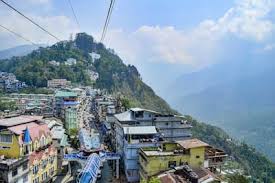While India boasts renowned tourist destinations like Ladakh and Jammu & Kashmir that are freely accessible to its citizens, certain regions within the country’s borders require special permits for entry. These areas, located near international boundaries, operate under the Inner Line Permit (ILP) system to regulate movement and maintain security.
Navigating the Permit Process
The Need for ILPs
The recent media focus on Prime Minister Narendra Modi’s visit to the breathtaking Lakshadweep Islands has shed light on the ILP application process. This Union Territory, an enchanting retreat off the Kerala coast, mandates permits for all travelers, including Indians, to manage tourism flow on these remote isles.
Application Requirements
Obtaining an ILP involves submitting a clearance certificate from a local police station, along with identification documents. Online application options are also available to streamline the process, ensuring accessibility and convenience for travelers.
The Significance of ILPs
Ensuring Security
ILPs play a crucial role in safeguarding sensitive border regions by regulating tourist influx and monitoring access. By controlling movement, authorities can better protect these areas while preserving their natural and cultural heritage.
Managing Tourism Impact
In destinations like the Lakshadweep Islands, ILPs help manage tourism numbers to prevent overcrowding and minimize environmental impact. By implementing permit systems, authorities can strike a balance between promoting tourism and preserving local ecosystems.
Balancing Access and Conservation
A Delicate Equilibrium
The Inner Line Permit system serves as a tool to balance the need for security with the promotion of responsible tourism. While it may add an extra step to travel planning, it ultimately contributes to the preservation of India’s diverse landscapes and cultural heritage.




